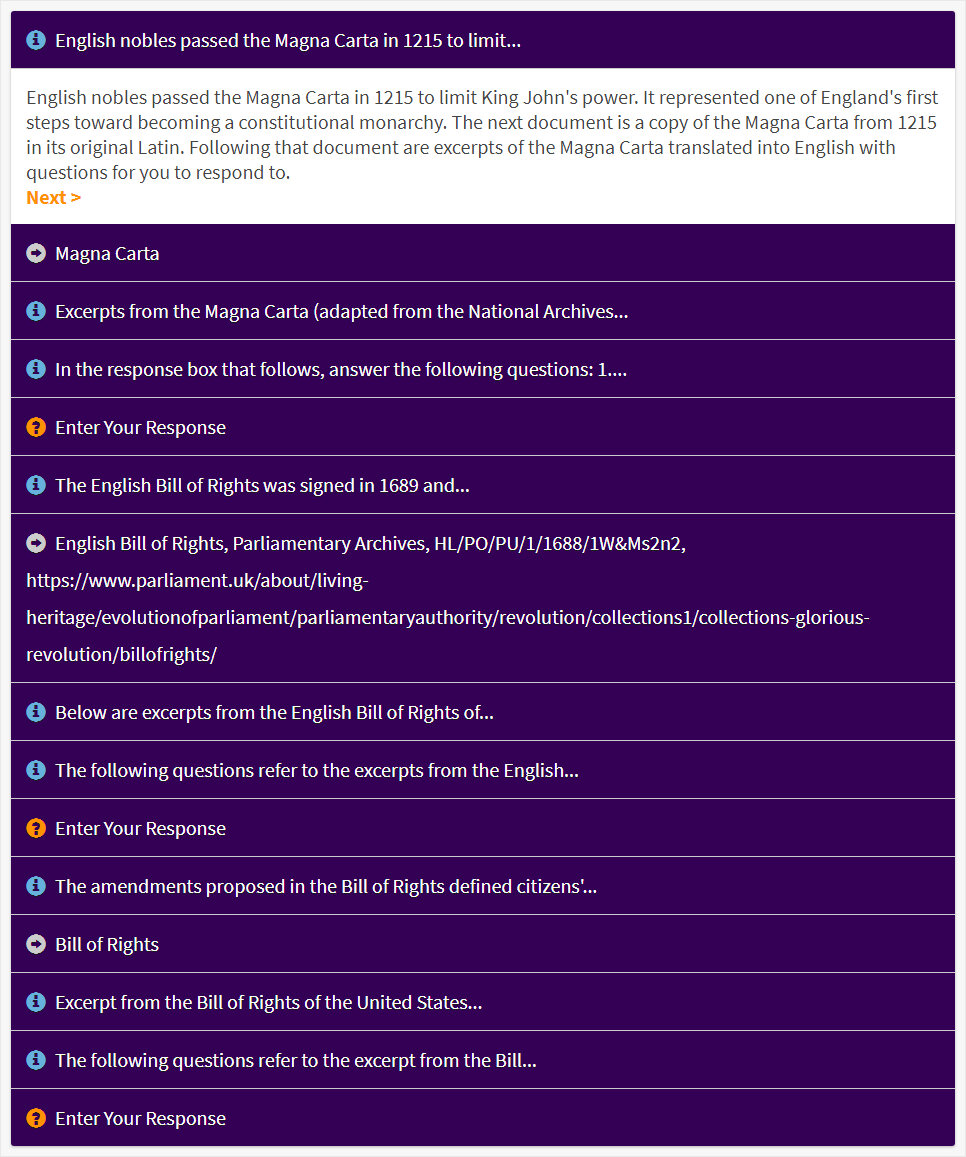In this activity students will examine the influences of the Magna Carta and the English Bill of Rights on the Bill of Rights in the U.S. Constitution. By the end of the activity students should be able to cite clear examples of the influence of English legal traditions in the U.S. Bill of Rights; they should also be able to give examples of how the American document is unique in offering even further expanded rights.
Suggested Teaching Instructions
Use this activity in a unit about the U.S. Constitution and/or about the influence of English legal traditions in the creation of U.S. legal codes. This activity is designed for grades 10-12 and will take approximately one class period.
The National Archives has on loan a 1297 copy of the Magna Carta, and the National Archives website has a number of resources related to the Magna Carta. You can view a
short video about the Magna Carta conservation treatment and
encasement. There is a
translation of the 1297 version of the document,
a larger image of the 1297 Magna Carta, and an
article on the background of the Magna Carta and its American legacy.
Begin the activity by asking students if they think laws are necessary. Move into a discussion exploring where students think that laws come from, who makes the laws, who is protected by laws. Help students understand that laws are developed and refined over time and that they are not created in a vacuum. Explain that when they were developing the Constitution, America's founding fathers relied upon the legal traditions that they were familiar with, especially English legal documents such as the
Magna Carta and the English Bill of Rights.
Direct students to the activity and tell them that they will read excerpts from the Magna Carta, the English Bill of Rights, and the U.S. Constitution. Ask them to pay particular attention to the continuities that they see across all three documents. Students can work individually, in pairs, or in small groups. Since these are relatively difficult documents, peer support may be helpful.
After students complete the document analysis questions, bring the class back together for whole-class discussion. Debrief the documents together with the following questions:
- What rights were protected in each document?
- Whose rights were protected? Whose rights may have been left out?
- What continuities did you see throughout the documents?
- How did each document build on the others?
- How was each document unique?
- How do you think that law codes will continue to develop in the future?
Finally, direct students to the final activity in the "When you're done" section: Write a paragraph highlighting the ways that the Magna Carta and the English Bill of Rights influenced the development of the U.S. Bill of Rights, as well as the ways that the U.S. Bill of Rights was unique.
This activity was created by National Archives intern and social studies teacher Leah Bouas. 
To the extent possible under law, National Archives Education Team has waived all copyright and related or neighboring rights to "Comparing the Magna Carta and English Bill of Rights with the U.S. Bill of Rights".





